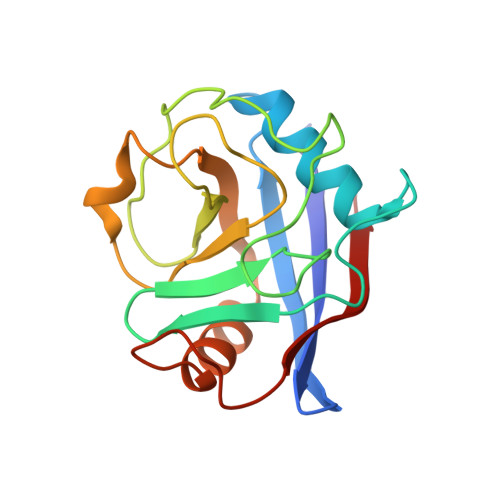Crystal Engineering Yields Crystals of Cyclophilin D Diffracting to 1.7 A Resolution
Schlatter, D., Thoma, R., Kueng, E., Stihle, M., Mueller, F., Boroni, E., Hennig, M.(2005) Acta Crystallogr D Biol Crystallogr 61: 513-519
- PubMed: 15858260
- DOI: https://doi.org/10.1107/S0907444905003070
- Primary Citation of Related Structures:
2BIT, 2BIU - PubMed Abstract:
In the pharmaceutical industry, knowledge of the three-dimensional structure of a specific target facilitates the drug-discovery process. Despite possessing favoured analytical properties such as high purity and monodispersion in light scattering, some proteins are not capable of forming crystals suitable for X-ray analysis. Cyclophilin D, an isoform of cyclophilin that is expressed in the mitochondria, was selected as a drug target for the treatment of cardiac disorders. As the wild-type enzyme defied all attempts at crystallization, protein engineering on the enzyme surface was performed. The K133I mutant gave crystals that diffracted to 1.7 A resolution using in-house X-ray facilities and were suitable for soaking experiments. The crystals were very robust and diffraction was maintained after soaking in 25% DMSO solution: excellent conditions for the rapid analysis of complex structures including crystallographic fragment screening.
Organizational Affiliation:
F. Hoffmann-La Roche Ltd, Pharmaceutical Research Discovery, CH-4070 Basel, Switzerland. [email protected]














